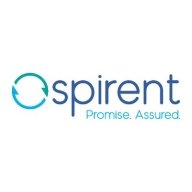

Spirent CyberFlood and SonarQube Cloud compete in network security testing and continuous code quality assessment respectively. CyberFlood is preferred for its robust security testing, while SonarQube Cloud stands out for code analysis and integration capabilities.
Features: Spirent CyberFlood offers advanced network simulation, comprehensive security testing, and a flexible compliance testing feature. SonarQube Cloud provides deep code analysis, integrates seamlessly with CI/CD tools, and focuses on identifying vulnerabilities and security hotspots.
Room for Improvement: Spirent CyberFlood could enhance its deployment process and user interface simplicity. Additional documentation could help users with setup and operation. SonarQube Cloud would benefit from reduced false positives, improved integration documentation, and better handling of large, complex codebases.
Ease of Deployment and Customer Service: SonarQube Cloud offers a cloud-based solution for quick deployment and is praised for effective customer support. CyberFlood, being on-premise, requires more setup time but offers a personalized and technically proficient service.
Pricing and ROI: Spirent CyberFlood involves higher initial costs due to its extensive security features, offering significant ROI through risk mitigation. SonarQube Cloud has a cost-effective subscription model that appeals to development teams seeking continuous code improvement with affordable pricing.
| Product | Market Share (%) |
|---|---|
| SonarQube Cloud (formerly SonarCloud) | 4.2% |
| Spirent CyberFlood | 0.5% |
| Other | 95.3% |


| Company Size | Count |
|---|---|
| Small Business | 8 |
| Midsize Enterprise | 3 |
| Large Enterprise | 4 |
SonarQube Cloud offers static code analysis and application security testing, seamlessly integrating into CI/CD pipelines. It's a vital tool for identifying vulnerabilities and ensuring code quality before deployment.
SonarQube Cloud is widely used for its ability to integrate with tools like GitHub, Jenkins, and Bitbucket, providing critical feedback at the pull request level. It's designed to help organizations maintain clean code by acting as a quality gate. This service supports development methodologies including sprints and Kanban for ongoing vulnerability management. While appreciated for its dashboard and integration capabilities, some users find initial setup challenging and note the need for enhanced documentation. The recent addition of mono reports and microservices support offers deeper insights into security and code quality, though container testing limitations and false positives are noted drawbacks. Manual intervention is sometimes required to address detailed reporting, with external tools being necessary for comprehensive analysis. Notifications for larger teams during serious issues and streamlined integration of new features are also areas of improvement.
What are the key features of SonarQube Cloud?In specific industries, SonarQube Cloud finds application in finance and healthcare where code integrity and security are paramount. It allows teams to identify critical vulnerabilities early and ensures that software development aligns with industry regulations and standards. By continuously analyzing code, it aids organizations in deploying secure and reliable applications, fostering trust and compliance.
Spirent’s revolutionary CyberFlood security and application testing solution is now available as a virtual platform offering you simplified use, by consolidating multiple test functions into a completely virtual test environment.
We monitor all Static Application Security Testing (SAST) reviews to prevent fraudulent reviews and keep review quality high. We do not post reviews by company employees or direct competitors. We validate each review for authenticity via cross-reference with LinkedIn, and personal follow-up with the reviewer when necessary.